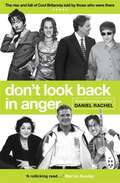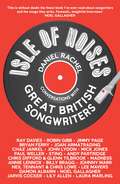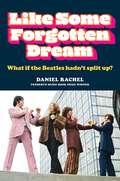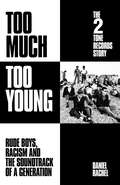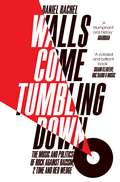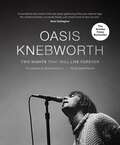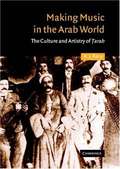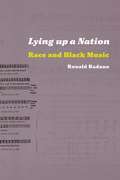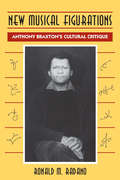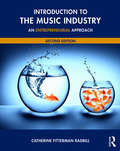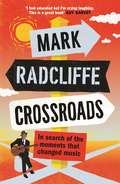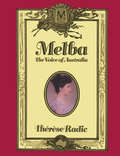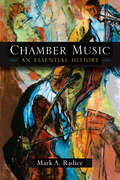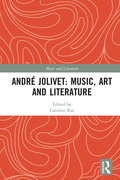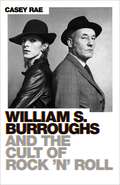- Table View
- List View
Don't Look Back In Anger: The rise and fall of Cool Britannia, told by those who were there
by Daniel RachelThe nineties was the decade when British culture reclaimed its position at the artistic centre of the world. Not since the 'Swinging Sixties' had art, comedy, fashion, film, football, literature and music interwoven into a blooming of national self-confidence. It was the decade of Lad Culture and Girl Power; of Blur vs Oasis. When fashion runways shone with British talent, Young British Artists became household names, football was 'coming home' and British film went worldwide. From Old Labour's defeat in 1992 through to New Labour's historic landslide in 1997, Don't Look Back In Anger chronicles the Cool Britannia age when the country united through a resurgence of patriotism and a celebration of all things British. But it was also an era of false promises and misplaced trust, when the weight of substance was based on the airlessness of branding, spin and the first stirrings of celebrity culture. A decade that started with hope then ended with the death of the 'people's princess' and 9/11 - an event that redefined a new world order. Through sixty-eight voices that epitomise the decade - including Tony Blair, John Major, Noel Gallagher, Damon Albarn, Tracey Emin, Keith Allen, Meera Syal, David Baddiel, Irvine Welsh and Steve Coogan - we re-live the epic highs and crashing lows of one of the most eventful periods in British history. Today, in an age where identity dominates the national agenda, Don't Look Back In Anger is a necessary and compelling historical document.
Isle of Noises: Conversations with great British songwriters
by Daniel RachelIsle of Noises features brand-new, exclusive, in-depth conversations with twenty-seven of the UK's greatest living musicians. Artists discuss their individual approach to writing, the inspiration behind their most successful songs, and the techniques and methods they have independently developed. It is an incredible musical journey spanning fifty years, from 'Waterloo Sunset' by Ray Davies to 'The Beast' by Laura Marling, with many lyrical and melodic secrets revealed along the way. Original handwritten lyrics from personal archives and notebooks (many never-before-seen) offer a unique glimpse into the heart of the creative process, and some of the greatest names in photography, including Jill Furmanovsky, Pennie Smith and Sheila Rock, have contributed stunning portraits of each artist. The combination of individual personal insights and the breadth and depth of knowledge in their collected experience makes Isle of Noises the essential word on classic British songwriting - as told by the songwriters themselves.
Like Some Forgotten Dream: What if the Beatles hadn't split up?
by Daniel Rachel***This is the story of the great lost Beatles album.The end of the Beatles wasn't inevitable. It came through miscommunication, misunderstandings and missed opportunities to reconcile.But what if it didn't end? What if just one of those chances was taken, and the Beatles carried on? What if they made one last, great album?In Like Some Forgotten Dream, Daniel Rachel - winner of the prestigious Penderyn Music Book Prize - looks at what could have been. Drawing on impeccable research, Rachel examines the the Fab Four's untimely demise - and from the ashes compiles a track list for an imagined final album, pulling together unfinished demos, forgotten B-sides, hit solo songs, and arguing that together they form the basis of a lost Beatles masterpiece.Compelling and convincing, Like Some Forgotten Dream is a daring re-write of Beatles history, and a tantalising glimpse of what might have been.Praise for Daniel Rachel:Walls Come Tumbling Down:'Superlative...brilliant' - Q Magazine'Triumphant' - The Guardian'Brilliant' - MojoIsle of Noises:'In depth, scholarly' - Q Magazine'Fascinating' - The Guardian / NME'Fantastic, insightful interviews' - Noel GallagherDon't Look Back in Anger:'A-grade, A-list' - The Sunday Times'A rollicking read' - Mail on Sunday'Remarkable' - Art Review'Book of the Week' - The Guardian
Too Much Too Young: Rude Boys, Racism and the Soundtrack of a Generation
by Daniel RachelIn 1979, 2 Tone exploded into the national conscience as records by The Specials, The Selecter, Madness, The Beat, and The Bodysnatchers burst onto the charts and a youth movement was born.2 Tone was black and white: a multi-racial force of British and Caribbean island musicians singing about social issues, racism, class and gender struggles. It spoke of injustices in society and took fight against right wing extremism.The music of 2 Tone was exuberant: white youth learning to dance to the infectious rhythm of ska and reggae; and crossed with a punk attitude to create an original hybrid. The idea of 2 Tone was born in Coventry, masterminded by a middle-class art student raised in the church. Jerry Dammers had a vision of an English Motown. Borrowing £700, the label's first record featured 'Gangsters' by The Specials' backed by an instrumental track by the, as yet, unformed, Selecter. Within two months the single was at number six in the national charts. Dammers signed Madness, The Beat and The Bodysnatchers as a glut of successive hits propelled 2 Tone onto Top of the Pops and into the hearts and minds of a generation. However, soon infighting amongst the bands and the pressures of running a label caused 2 Tone to bow to an inevitable weight of expectation and recrimination. Still under the auspices of Jerry Dammers, 2 Tone entered in a new phase. Perhaps not as commercially successful as its 1979-1981 incarnation the label nevertheless continued to thrive for a further four years releasing a string of fresh signings and a stunning end-piece finale in '(Free) Nelson Mandela'. Told in three parts, Too Much Too Young is the definitive story of a label that for a brief, bright burning moment, shaped British culture.
Walls Come Tumbling Down: The Music and Politics of Rock Against Racism, 2 Tone and Red Wedge
by Daniel RachelWalls Come Tumbling Down charts the pivotal period between 1976 and 1992 that saw politics and pop music come together for the first time in Britain's musical history; musicians and their fans suddenly became instigators of social change, and 'the political persuasion of musicians was as important as the songs they sang'. Through the voices of campaigners, musicians, artists and politicians, Daniel Rachel follows the rise and fall of three key movements of the time: Rock Against Racism, 2 Tone, and Red Wedge, revealing how they all shaped, and were shaped by, the music of a generation.Composed of interviews with over a hundred and fifty of the key players at the time, Walls Come Tumbling Down is a fascinating, polyphonic and authoritative account of those crucial sixteen years in Britain's history.
Oasis: THE SUNDAY TIMES BESTSELLER Two Nights That Will Live Forever
by Daniel Rachel Jill Furmanovsky***'A wonderful document of the last great gathering of the pre-internet age. No camera phones, no social media, just a band and its fans as one' -NOEL GALLAGHER On 10th and 11th August 1996, Oasis played the concerts that would define them, a band at the height of their powers playing to over 250,000 people.Twenty-five years on, this is the inside story of those nights, told through the breathtaking photographs of Jill Furmanovsky, granted unprecedented access to Oasis throughout that summer. Also includes newly obtained first-hand accounts from the people who were there - including Noel Gallagher and Alan McGee - in text by award-winning author Daniel Rachel. From relaxed rehearsals and warm-up concerts to Knebworth itself - backstage, onstage, flying high above the site - many of the stunning photographs in this book have never been seen anywhere before.This the definitive account of two nights that a generation will never forget.
Making Music In The Arab World: The Culture And Artistry Of Tarab (PDF)
by A. J. Racy Julia A. Clancy-Smith Israel Gershoni Roger Owen Yezid Sayigh Charles Tripp Judith E. TuckerA. J. Racy is well known as a scholar of ethnomusicology and as a distinguished performer and composer. In this pioneering book, he provides an intimate portrayal of the Arab musical experience and offers insights into how music generally affects us all. The focus is tarab, a multifaceted concept that has no exact equivalent in English and refers to both the indigenous music and the ecstatic feeling associated with it. Richly documented, the book examines various aspects of the musical craft, including the basic learning processes, how musicians become inspired, the love lyrics as tools of ecstasy, the relationship between performers and listeners, and the influence of technological mediation and globalization. Racy also probes a variety of world musical and ecstatic contexts and analyses theoretical paradigms from other related disciplines. Written in a lucid style, Making Music in the Arab World will engage the general reader as well as the specialist.
Lying up a Nation: Race and Black Music (Chicago Visual Library)
by Ronald M. RadanoWhat is black music? For some it is a unique expression of the African-American experience, its soulful vocals and stirring rhythms forged in the fires of black resistance in response to centuries of oppression. But as Ronald Radano argues in this bracing work, the whole idea of black music has a much longer and more complicated history-one that speaks as much of musical and racial integration as it does of separation.
New Musical Figurations: Anthony Braxton's Cultural Critique
by Ronald M. RadanoNew Musical Figurations exemplifies a dramatically new way of configuring jazz music and history. By relating biography to the cultural and musical contours of contemporary American life, Ronald M. Radano observes jazz practice as part of the complex interweaving of postmodern culture—a culture that has eroded conventional categories defining jazz and the jazz musician. Radano accomplishes all this by analyzing the creative life of Anthony Braxton, one of the most emblematic figures of this cultural crisis. Born in 1945, Braxton is not only a virtuoso jazz saxophonist but an innovative theoretician and composer of experimental art music. His refusal to conform to the conventions of official musical culture has helped unhinge the very ideologies on which definitions of "jazz," "black music," "popular music," and "art music" are founded. New Musical Figurations gives the richest view available of this many-sided artist. Radano examines Braxton's early years on the South Side of Chicago, whose vibrant black musical legacy inspired him to explore new avenues of expression. Here is the first detailed history of Braxton's central role in the Association for the Advancement of Creative Musicians, the principal musician-run institution of free jazz in the United States. After leaving Chicago, Braxton was active in Paris and New York, collaborating with Philip Glass, Steve Reich, Frederic Rzewski, and other composers affiliated with the experimental-music movement. From 1974 to 1981, he gained renown as a popular jazz performer and recording artist. Since then he has taught at Mills College and Wesleyan University, given lectures on his theoretical musical system, and written works for chamber groups as well as large, opera-scale pieces. The neglect of radical, challenging figures like Braxton in standard histories of jazz, Radano argues, mutes the innovative voice of the African-American musical tradition. Refreshingly free of technical jargon, New Musical Figurations is more than just another variation on the same jazz theme. Rather, it is an exploratory work as rich in theoretical vision as it is in historical detail.
New Musical Figurations: Anthony Braxton's Cultural Critique
by Ronald M. RadanoNew Musical Figurations exemplifies a dramatically new way of configuring jazz music and history. By relating biography to the cultural and musical contours of contemporary American life, Ronald M. Radano observes jazz practice as part of the complex interweaving of postmodern culture—a culture that has eroded conventional categories defining jazz and the jazz musician. Radano accomplishes all this by analyzing the creative life of Anthony Braxton, one of the most emblematic figures of this cultural crisis. Born in 1945, Braxton is not only a virtuoso jazz saxophonist but an innovative theoretician and composer of experimental art music. His refusal to conform to the conventions of official musical culture has helped unhinge the very ideologies on which definitions of "jazz," "black music," "popular music," and "art music" are founded. New Musical Figurations gives the richest view available of this many-sided artist. Radano examines Braxton's early years on the South Side of Chicago, whose vibrant black musical legacy inspired him to explore new avenues of expression. Here is the first detailed history of Braxton's central role in the Association for the Advancement of Creative Musicians, the principal musician-run institution of free jazz in the United States. After leaving Chicago, Braxton was active in Paris and New York, collaborating with Philip Glass, Steve Reich, Frederic Rzewski, and other composers affiliated with the experimental-music movement. From 1974 to 1981, he gained renown as a popular jazz performer and recording artist. Since then he has taught at Mills College and Wesleyan University, given lectures on his theoretical musical system, and written works for chamber groups as well as large, opera-scale pieces. The neglect of radical, challenging figures like Braxton in standard histories of jazz, Radano argues, mutes the innovative voice of the African-American musical tradition. Refreshingly free of technical jargon, New Musical Figurations is more than just another variation on the same jazz theme. Rather, it is an exploratory work as rich in theoretical vision as it is in historical detail.
New Musical Figurations: Anthony Braxton's Cultural Critique
by Ronald M. RadanoNew Musical Figurations exemplifies a dramatically new way of configuring jazz music and history. By relating biography to the cultural and musical contours of contemporary American life, Ronald M. Radano observes jazz practice as part of the complex interweaving of postmodern culture—a culture that has eroded conventional categories defining jazz and the jazz musician. Radano accomplishes all this by analyzing the creative life of Anthony Braxton, one of the most emblematic figures of this cultural crisis. Born in 1945, Braxton is not only a virtuoso jazz saxophonist but an innovative theoretician and composer of experimental art music. His refusal to conform to the conventions of official musical culture has helped unhinge the very ideologies on which definitions of "jazz," "black music," "popular music," and "art music" are founded. New Musical Figurations gives the richest view available of this many-sided artist. Radano examines Braxton's early years on the South Side of Chicago, whose vibrant black musical legacy inspired him to explore new avenues of expression. Here is the first detailed history of Braxton's central role in the Association for the Advancement of Creative Musicians, the principal musician-run institution of free jazz in the United States. After leaving Chicago, Braxton was active in Paris and New York, collaborating with Philip Glass, Steve Reich, Frederic Rzewski, and other composers affiliated with the experimental-music movement. From 1974 to 1981, he gained renown as a popular jazz performer and recording artist. Since then he has taught at Mills College and Wesleyan University, given lectures on his theoretical musical system, and written works for chamber groups as well as large, opera-scale pieces. The neglect of radical, challenging figures like Braxton in standard histories of jazz, Radano argues, mutes the innovative voice of the African-American musical tradition. Refreshingly free of technical jargon, New Musical Figurations is more than just another variation on the same jazz theme. Rather, it is an exploratory work as rich in theoretical vision as it is in historical detail.
Introduction to the Music Industry: An Entrepreneurial Approach, Second Edition
by Catherine Fitterman RadbillIntroduction to the Music Industry: An Entrepreneurial Approach, Second Edition is an introductory textbook that offers a fresh perspective in one of the fastest-changing businesses in the world today. It engages students with creative problem-solving activities, collaborative projects and case studies as they explore the inner workings of the music business, while encouraging them to think like entrepreneurs on a path toward their own successful careers in the industry. This new edition includes a revised chapter organization, with chapters streamlined to focus on topics most important to music business students, while also maintaining its user-friendly chapter approach. Supported by an updated companion website, this book equips music business students and performance majors with the knowledge and tools to adopt and integrate entrepreneurial thinking successfully into practice and shape the future of the industry.
Introduction to the Music Industry: An Entrepreneurial Approach, Second Edition
by Catherine Fitterman RadbillIntroduction to the Music Industry: An Entrepreneurial Approach, Second Edition is an introductory textbook that offers a fresh perspective in one of the fastest-changing businesses in the world today. It engages students with creative problem-solving activities, collaborative projects and case studies as they explore the inner workings of the music business, while encouraging them to think like entrepreneurs on a path toward their own successful careers in the industry. This new edition includes a revised chapter organization, with chapters streamlined to focus on topics most important to music business students, while also maintaining its user-friendly chapter approach. Supported by an updated companion website, this book equips music business students and performance majors with the knowledge and tools to adopt and integrate entrepreneurial thinking successfully into practice and shape the future of the industry.
Crossroads: In Search of the Moments that Changed Music
by Mark RadcliffeStanding at the crossroads - the Mississippi crossroads of Robert Johnson and the devil's infamous meeting - Mark Radcliffe found himself facing his own personal crunch point. Aged sixty, he had just mourned the death of his father, only to be handed a diagnosis of mouth and throat cancer. This momentous time in his life, and being at the most famous junction in music history, led Radcliffe to think about the pivotal tracks in music and how the musicians who wrote and performed them - from Woodie Guthrie to Gloria Gaynor, Kurt Cobain to Bob Marley - had reached the crossroads that led to such epoch-changing music. In this warm, intimate account of music and its power to transform our lives, Radcliffe takes a personal journey through these touchstone tracks, looking at the story behind the records and his own experiences as he goes in search of these moments.
Melba: The Voice of Australia
by Therese RadicA biography of the world-famous opera singer Dame Nellie Melba, this book provides fresh insights into her character and motivations. It describes her childhood in Australia, her studies in Paris, her rise to fame and the fascination which she inspired up to the time of the mysterious illness which caused her death. Melba is presented as a shrewd, self-made woman, financially and personally independent. She managed her greatest asset - her voice - and her earnings cleverly so that the voice lasted the distance of a long and strenuous career, and her investments enabled her to enjoy life on a grand scale. She dictated the terms of her own life and rose to unsurpassed heights in her chosen profession. The book's large format enables the main text to be supplemented by lengthy footnotes running down the outside margins, providing additional historical and anecdotal information.
Chamber Music: An Essential History
by Mark A RadiceIntended for the music student, the professional musician, and the music lover, Chamber Music: An Essential History covers repertoire from the Renaissance to the present, crossing genres to include string quartets, piano trios, clarinet quintets, and other groupings. Mark A. Radice gives a thorough overview and history of this long-established and beloved genre, typically performed by groups of a size to fit into spaces such as homes or churches and tending originally toward the string and wind instruments rather than percussion. Radice begins with chamber music's earliest expressions in the seventeenth century, discusses its most common elements in terms of instruments and compositional style, and then investigates how those elements play out across several centuries of composers- among them Mozart, Bach, Haydn, and Brahms- and national interpretations of chamber music. While Chamber Music: An Essential History is intended largely as a textbook, it will also find an audience as a companion volume for musicologists and fans of classical music, who may be interested in the background to a familiar and important genre.
André Jolivet: Music, Art and Literature (Music and Literature)
by Caroline RaeThis first book in English on the French composer André Jolivet (1905–1974) investigates his music, life and influence. A pupil of Varèse and colleague of Messiaen in La Jeune France, Jolivet is a major figure in French music of the twentieth century. His music combines innovative language with spirituality, summarised in his self-declared axiom to ‘restore music’s ancient original meaning when it was the magic and incantatory expression of the sacred in human communities’. The book’s contextual introduction is followed by contributions, edited by Caroline Rae, from leading international scholars including the composer’s daughter Christine Jolivet-Erlih. These assess Jolivet’s output and activities from the 1920s through to his last works, exploring creative process, aesthetic, his relationship with the exotic and influences from literature. They also examine, for the first time, the significance of Jolivet’s involvement with the visual arts and his activities as conductor, teacher and critic. A chronology of Jolivet’s life and works with details of first performances provides valuable overview and reference. This fascinating and comprehensive volume is an indispensable source for research into French music and culture of the twentieth century.
André Jolivet: Music, Art and Literature (Music and Literature)
by Caroline RaeThis first book in English on the French composer André Jolivet (1905–1974) investigates his music, life and influence. A pupil of Varèse and colleague of Messiaen in La Jeune France, Jolivet is a major figure in French music of the twentieth century. His music combines innovative language with spirituality, summarised in his self-declared axiom to ‘restore music’s ancient original meaning when it was the magic and incantatory expression of the sacred in human communities’. The book’s contextual introduction is followed by contributions, edited by Caroline Rae, from leading international scholars including the composer’s daughter Christine Jolivet-Erlih. These assess Jolivet’s output and activities from the 1920s through to his last works, exploring creative process, aesthetic, his relationship with the exotic and influences from literature. They also examine, for the first time, the significance of Jolivet’s involvement with the visual arts and his activities as conductor, teacher and critic. A chronology of Jolivet’s life and works with details of first performances provides valuable overview and reference. This fascinating and comprehensive volume is an indispensable source for research into French music and culture of the twentieth century.
William S. Burroughs and the Cult of Rock ‘n’ Roll
by Casey RaeWilliam S. Burroughs's fiction and essays are legendary, but his influence on music's counterculture has been less well documented-until now. Examining how one of America's most controversial literary figures altered the destinies of many notable and varied musicians, William S. Burroughs and the Cult of Rock 'n' Roll reveals the transformations in music history that can be traced to Burroughs.A heroin addict and a gay man, Burroughs rose to notoriety outside the conventional literary world; his masterpiece, Naked Lunch, was banned on the grounds of obscenity, but its nonlinear structure was just as daring as its content. Casey Rae brings to life Burroughs's parallel rise to fame among daring musicians of the 1960s, '70s, and '80s, when it became a rite of passage to hang out with the author or to experiment with his cut-up techniques for producing revolutionary lyrics (as the Beatles and Radiohead did). Whether they tell of him exploring the occult with David Bowie, providing Lou Reed with gritty depictions of street life, or counseling Patti Smith about coping with fame, the stories of Burroughs's backstage impact will transform the way you see America's cultural revolution-and the way you hear its music.
